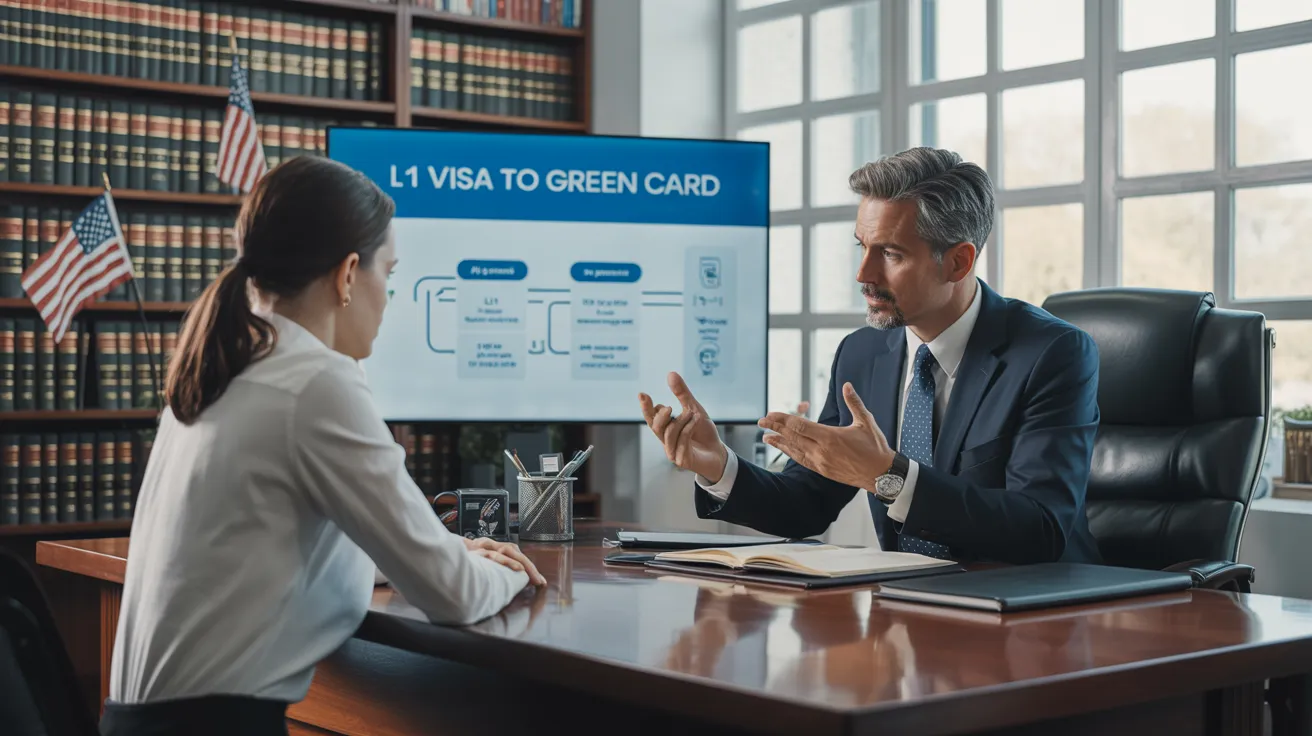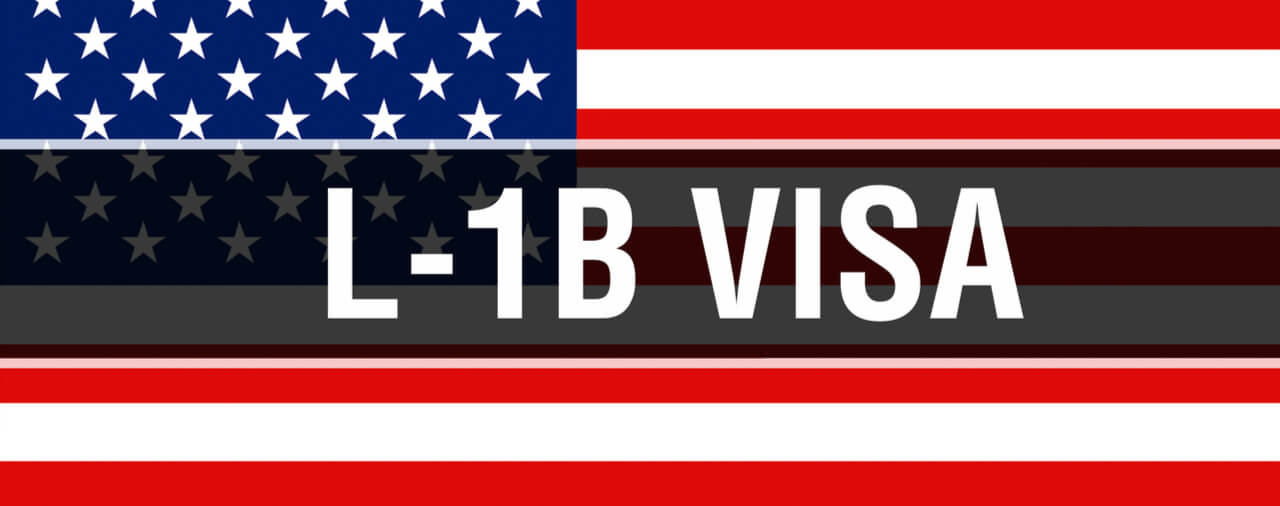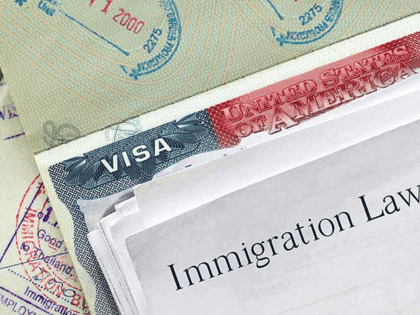L1 Visa Attorney Support
Opening Opportunities: A Comprehensive Overview to the L1 Visa Process
The L1 visa procedure provides a critical pathway for multinational business looking for to transfer essential workers across boundaries. Comprehending the subtleties of qualification requirements, the distinctions between L-1A and L-1B visas, and the details of the application procedure can greatly affect a candidate's success. Nonetheless, maneuvering this complicated landscape is not without its obstacles, and cautious interest to documents and company sponsorship is important. As we check out the crucial elements of this process, the approaches for getting rid of prospective barriers will certainly end up being evident, disclosing just how educated prep work can open up a world of opportunities.
Understanding the L1 Visa
Understanding the L1 visa requires identifying its value as an important device for multinational companies looking for to transfer skilled employees between worldwide offices. This non-immigrant visa group promotes the movement of execs, managers, and specialized expertise employees to the United States, therefore enabling companies to preserve functional continuity and harness global talent effectively. The L1 visa is separated into 2 key categories: L-1A for supervisors and executives, and L-1B for staff members possessing specialized knowledge.The L1 visa offers a crucial duty in improving a company's one-upmanship in the worldwide marketplace - L1 Visa. By permitting companies to relocate their crucial employees, services can assure that vital tasks are managed by certified people who are already accustomed to the company's culture and operational procedures. This interior transfer mechanism not only promotes knowledge sharing yet likewise advertises development and partnership throughout borders.Moreover, the L1 visa is frequently preferred for its reasonably uncomplicated application procedure compared to other visa classifications, as it allows for double intent, permitting holders to go after long-term residency while on a short-lived job visa. This attribute makes the L1 visa specifically appealing for both employers and workers, as it enhances the path for proficient experts to develop long-lasting residency in the United States
Qualification Standards
Qualification for the L1 visa rests on several crucial criteria that ensure both the worker and the employer fulfill specific qualifications. This non-immigrant visa is designed for international companies to transfer employees from consular services to united state counterparts.Firstly, the company needs to be a qualifying organization, that includes a moms and dad firm, branch, associate, or subsidiary of an U.S. business. The company needs to have been doing business for at the very least one year both in the U.S. and abroad. This ensures that the business has sufficient functional stability and a legit presence.Secondly, the employee must hold a supervisory, exec, or specialized knowledge placement. For L1A visas, the candidate needs to show supervisory or executive credentials, while L1B visas concentrate on specialized knowledge pertaining to the organization's products, solutions, or processes. Additionally, the employee must have functioned for the international entity for at the very least one constant year within the last three years prior to their application.Lastly, the worker's duty in the U.S. have to straighten with their previous position, ensuring that their abilities and expertise are leveraged for the company's benefit.
Kinds Of L1 Visas
The L1 visa group makes up 2 primary kinds developed to assist in the transfer of workers within international companies: the L1A visa for supervisors and executives, and the L1B visa for employees with specialized understanding. Each kind serves distinct objectives and has particular qualification criteria.The L1A visa is tailored for individuals that hold managerial or executive placements within a company. This visa allows top-level employees to move to a united state branch, subsidiary, or affiliate of the exact same organization. Applicants for the L1A visa need to show that they have been used in a managerial or executive capacity for a minimum of one constant year within the past three years before their application. In addition, this visa provides a much longer period of stay, initially granted for three years, with the opportunity of extensions for as much as 7 years.In comparison, the L1B visa is planned for professionals with specialized understanding relevant to the company's products, solutions, or procedures. To qualify, candidates need to show that their competence is crucial to the company which they have benefited at least one continual year within the last three years in a function that required this specialized understanding. The L1B visa is at first provided for 3 years, with expansions readily available for approximately five years.Both visa types are vital for business looking for to boost their international procedures by leveraging experienced personnel, therefore advertising technology and performance within the U.S. market.
Application Process
Guiding via the L1 copyright procedure involves numerous crucial steps that should be diligently complied with to assure an effective outcome. The process begins with the united state employer, that should initially establish eligibility by demonstrating a certifying relationship with the foreign entity and confirming that the employee fulfills the specific needs for the L1 visa group being sought.Once qualification is validated, the company starts the process by submitting Type I-129, the Request for a Nonimmigrant Worker, with the United State Citizenship and Migration Provider (USCIS) This form must be come with by a detailed description of the task tasks to be done, the organizational framework of both the united state and foreign entities, and the employee's credentials. It's important to verify that all info is exact and complete, as noninclusions or inaccuracies can bring about delays or denials.Upon authorization of the I-129 petition, the next action involves the staff member requesting the L1 visa at a united state consular office or consulate in their home country. This phase needs the completion of Type DS-160, the Online Nonimmigrant copyright, and setting up an interview. Throughout the interview, the candidate should offer evidence sustaining their qualifications and the company's petition.After the visa is approved, the employee can go into the USA to operate in the marked function. On the whole, careful prep work and adherence to every step of the application process are vital for a successful L1 visa result.
Required Documentation

Essential Kinds Needed
Navigating the L1 Visa procedure needs cautious attention to the essential types and documentation needed for an effective application. The main form needed is the Form I-129, Application for a Nonimmigrant Worker, which must be completed and sent by the united state company. This kind lays out the details of the work deal and the qualifications of the staff member looking for the L1 Visa.Alongside Type I-129, the applicant will require to full Form I-539 if coming with relative are additionally getting visas. In addition, the employer must supply evidence of the certifying relationship between the united state entity and the international entity, often necessitating the submission of corporate files such as write-ups of consolidation or financial statements.Moreover, it is vital to consist of the L Classification Supplement to Kind I-129, which defines the kind of L Visa being asked for-- either L-1A for supervisors and execs or L-1B for staff members with specialized knowledge. Applicants must guarantee that all forms are authorized and dated suitably, as incomplete submissions can lead to delays or rejections. Effectively putting together these crucial types lays the foundation for a smoother L1 copyright procedure.

Supporting Proof Demands
Sustaining documents is crucial for an effective L1 copyright, as it corroborates the insurance claims made in the application. Candidates have to give a series of papers to show eligibility for the visa, which is classified into 2 primary types: proof of the qualifying relationship between the U.S. and foreign entities and evidence of the applicant's qualifications.To develop the connection, applicants should send documents such as corporate organizational graphes, economic statements, and evidence of ownership. These documents validate that the international firm has a qualifying relationship with the U.S. employer, whether as a moms and dad business, subsidiary, branch, or affiliate.For the candidate's certifications, necessary records include an in-depth work letter from the foreign employer, outlining the candidate's task title, responsibilities, and period of employment. Additionally, instructional qualifications, such as degrees and diplomas, need to be provided to verify the candidate's proficiency in the appropriate field.
Company Sponsorship Records

Typical Difficulties
Steering the L1 visa process presents a number of usual obstacles that applicants need to be mindful of. Secret issues usually consist of rigorous documentation demands, prospective delays in processing times, and the necessity for rigorous legal conformity. Comprehending these challenges can help candidates better prepare and mitigate dangers throughout their copyright journey.
Paperwork Demands
The L1 copyright process usually provides considerable obstacles associated with documents requirements. Candidates must give considerable documentation to establish eligibility, which can result in complication and potential delays. Secret papers consist of proof of a certifying partnership in between the united state and foreign employer, evidence of the applicant's employment history, and comprehensive details about the job role in the U.S.One usual challenge is gathering sufficient evidence to show the nature of the qualifying partnership. Companies usually have a hard time to existing clear organizational graphes or monetary statements that show the connection in between the entities. Furthermore, ensuring that letters of assistance from companies accurately reflect the applicant's job obligations and certifications is crucial, as obscure summaries can cause denials.Another problem occurs from the demand for in-depth task summaries that line up with the L1 visa categories. Candidates should verbalize not only their current duty but also their managerial or specialized expertise duties clearly. This demands a complete understanding of both the applicant's position and the governing language utilized in L1 applications.
Handling Time Hold-ups
Experiencing delays in handling times is a typical challenge encountered by L1 visa candidates, typically resulting in aggravation and unpredictability. Several variables add to these hold-ups, including high application volumes, enhanced examination of applications, and administrative stockpiles within the united state Citizenship and Immigration Services (USCIS) Applicants might find that handling times can differ considerably depending upon the service center managing their application, as each center has its own work and efficiency degrees. In addition, the intricacy of the candidate's situation, such as the requirement for substantial paperwork or clarification, can better expand wait times.In some instances, problems associated with the candidate's present immigration standing or previous visa history might also cause additional hold-ups, as USCIS might need more evaluation or information. It is important for candidates to stay positive during this period, keeping open interaction with their companies and lawful agents to address any prospective issues promptly.Understanding these handling time challenges can assist L1 visa candidates plan for possible hold-ups and mitigate the effect on their shift and career strategies. Persistence and diligence are crucial merits in steering this complex procedure.
Legal Conformity Issues
Numerous L1 visa candidates run into legal compliance problems that can complicate their trip toward obtaining the visa. Comprehending and sticking to the details laws set by the U.S. Citizenship and Migration Provider (USCIS) is vital. Typical difficulties consist of demonstrating the qualifying connection in between the foreign and U.S. employers, as well as proving that the applicant has the requisite customized expertise or managerial capacity.Additionally, candidates have to provide comprehensive paperwork detailing their task tasks, business structure, and monetary practicality of the U.S. entity. Insufficient or imprecise paperwork can result in delays or even denials. Companies have to additionally assure that they follow labor legislations, consisting of wage and functioning problem standards, which can affect visa eligibility.Another common issue involves preserving conformity with the regards to the visa once provided. Modifications in employment condition, task obligations, or firm structure can demand changes to the visa, which if not attended to promptly can cause lawful complications. Therefore, staying notified concerning conformity demands and looking for legal advice when required is necessary to navigate the intricacies of the L1 visa procedure successfully.
Tips for Success
Success in the L1 copyright procedure usually depends upon thorough preparation and interest to information. To improve your possibilities of approval, start by completely understanding the eligibility demands for both the L1A and L1B visa groups. Review whether your placement at the business certifies as supervisory, executive, or specialized expertise, as this categorization significantly impacts your application.Next, gather extensive paperwork that validates your insurance claims. This consists of business charts, in-depth job descriptions, and evidence of the business's functional framework. Clear and succinct evidence of the certifying connection in between the U.S. entity and the foreign entity is important. Validate that all files are organized practically and offered in an expert way, as this mirrors your commitment and seriousness about the application.Engage the services of a skilled migration attorney who concentrates on L1 visas. Their experience can show important, guiding you via facility policies and assuring that all paperwork follows current legislations. Additionally, plan for the meeting by practicing response to usual concerns and preparing to review your function and payments to the firm detailed.
Regularly Asked Questions
Can Family Members Come With the L1 Visa Owner?
Yes, family participants of L1 visa owners, including spouses and single children under 21, can go along with the key visa holder. They might likewise apply for L2 visas, which allow them to stay in the USA.
For How Long Can I Remain On an L1 Visa?
The L1 visa permits first stays of approximately three years, with the opportunity of expansion. L1A visa holders might remain for a maximum of seven years, while L1B visa owners can continue to be for 5 years.
Can L1 Visa Holders Get an Eco-friendly Card?
Yes, L1 visa holders can look for a permit. L1 Visa. They may pursue long-term residency with employment-based categories, typically needing sponsorship from their company, provided they fulfill the required credentials and documents needs
What Occurs if My L1 copyright Is Denied?
If your L1 copyright is refuted, you may obtain a notification detailing the reasons for rejection. You can seek to L1 Visa Requirements appeal the choice, reapply, or discover different visa choices based on your circumstances.
Are There Any Kind Of Travel Restrictions With an L1 Visa?
An L1 visa generally permits worldwide traveling; however, re-entry to the U. L1 Visa.S. rests upon keeping valid condition. Tourists must guarantee conformity with visa problems to avoid problems upon return
Verdict
